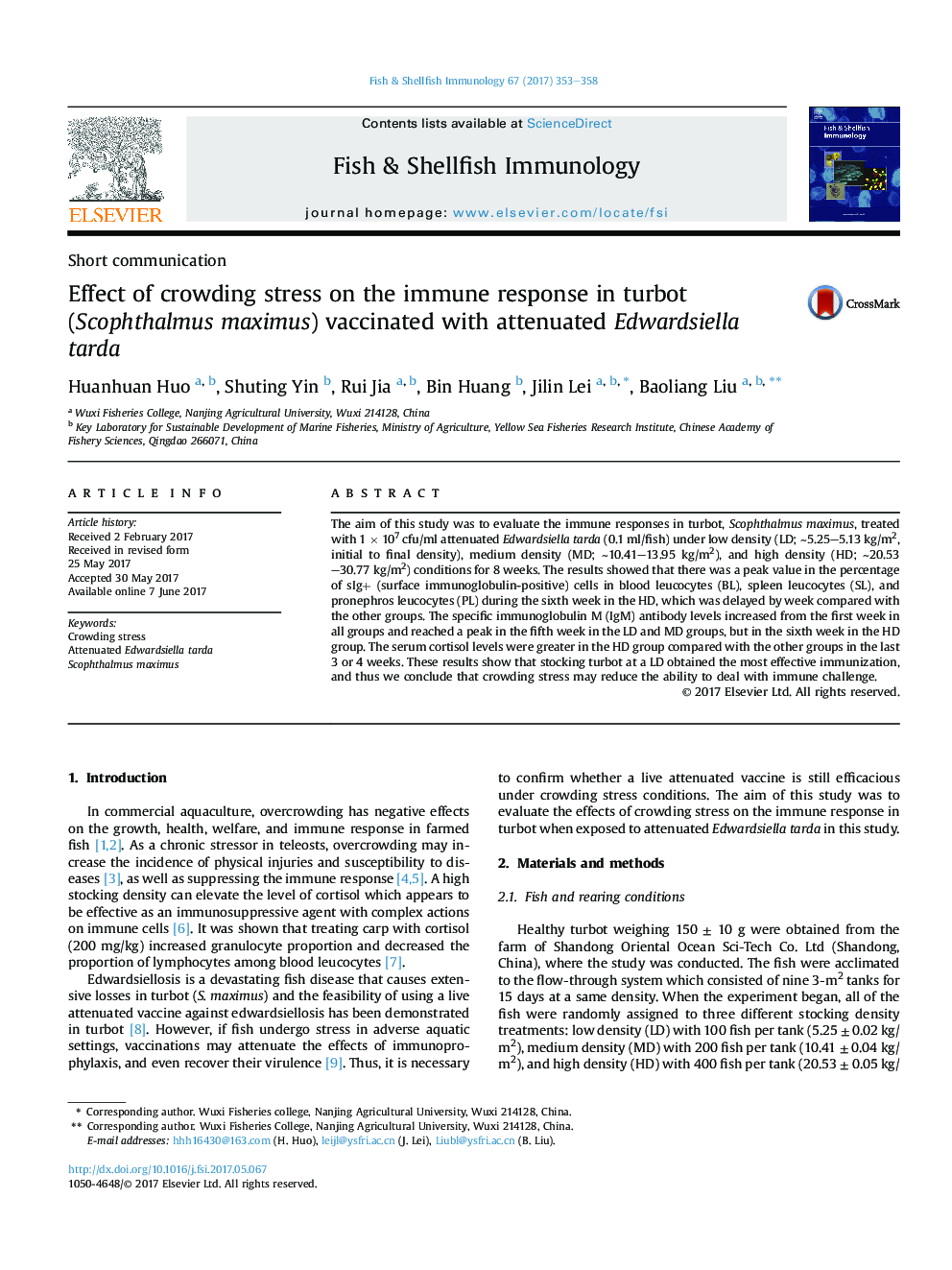| Article ID | Journal | Published Year | Pages | File Type |
|---|---|---|---|---|
| 5540892 | Fish & Shellfish Immunology | 2017 | 6 Pages |
â¢We studied the effects of crowding stress on inoculated turbot for 8 weeks.â¢The kinetics of sIg+ cells, specific antibody and cortisol were studied.â¢Crowding stress is adverse for the production of sIg+ cells and specific antibody.â¢The level of cortisol is higher when inoculated attenuated Edwardsiella tarda.
The aim of this study was to evaluate the immune responses in turbot, Scophthalmus maximus, treated with 1Â ÃÂ 107Â cfu/ml attenuated Edwardsiella tarda (0.1 ml/fish) under low density (LD; â¼5.25-5.13Â kg/m2, initial to final density), medium density (MD; â¼10.41-13.95Â kg/m2), and high density (HD; â¼20.53-30.77Â kg/m2) conditions for 8 weeks. The results showed that there was a peak value in the percentage of sIg+ (surface immunoglobulin-positive) cells in blood leucocytes (BL), spleen leucocytes (SL), and pronephros leucocytes (PL) during the sixth week in the HD, which was delayed by week compared with the other groups. The specific immunoglobulin M (IgM) antibody levels increased from the first week in all groups and reached a peak in the fifth week in the LD and MD groups, but in the sixth week in the HD group. The serum cortisol levels were greater in the HD group compared with the other groups in the last 3 or 4 weeks. These results show that stocking turbot at a LD obtained the most effective immunization, and thus we conclude that crowding stress may reduce the ability to deal with immune challenge.
